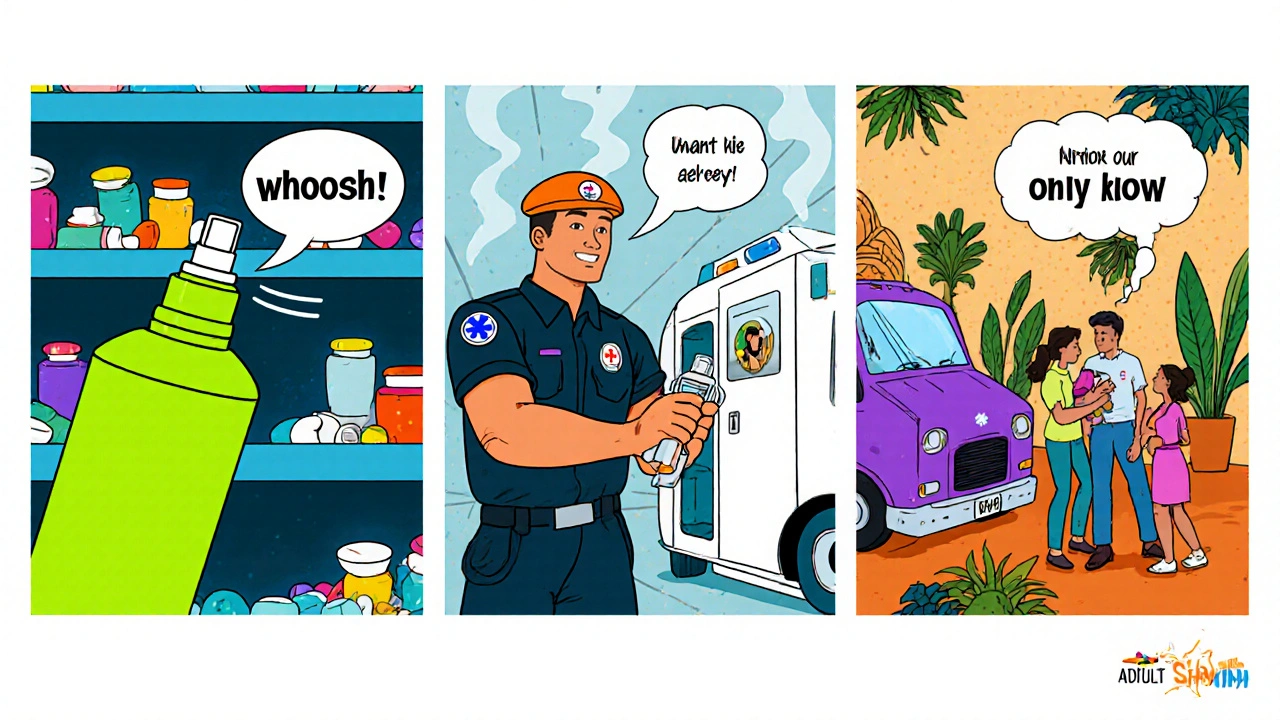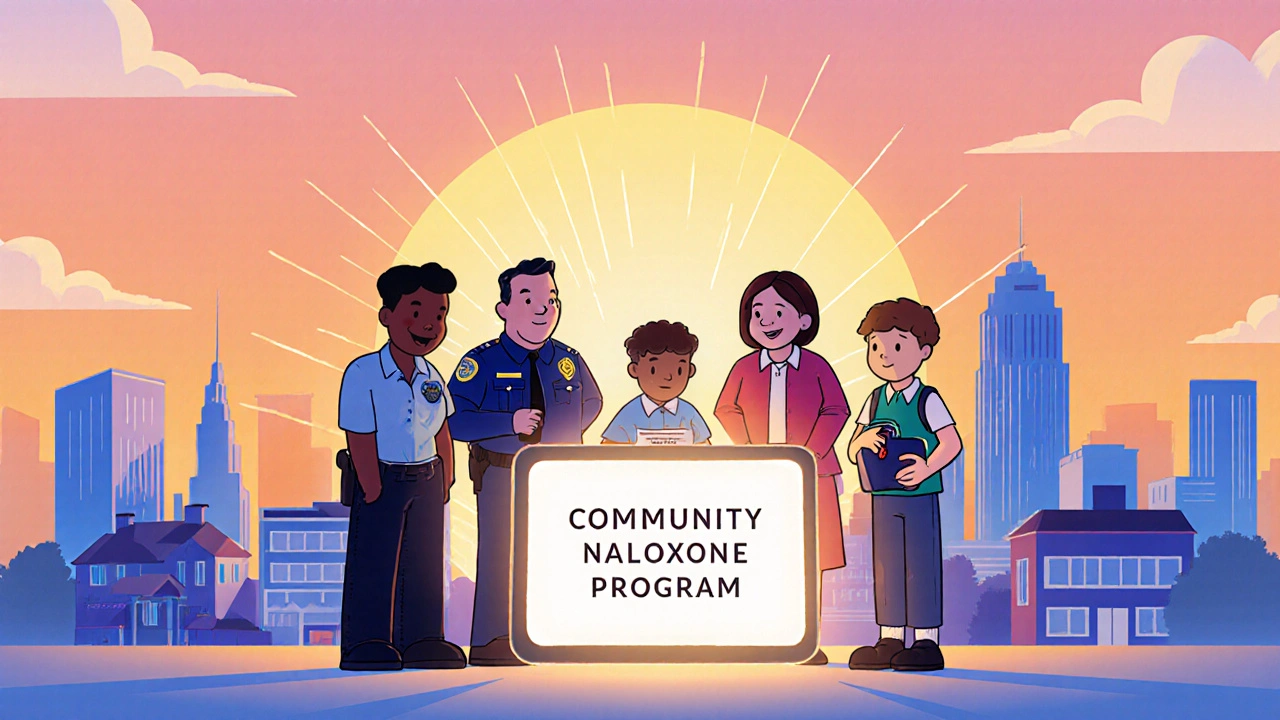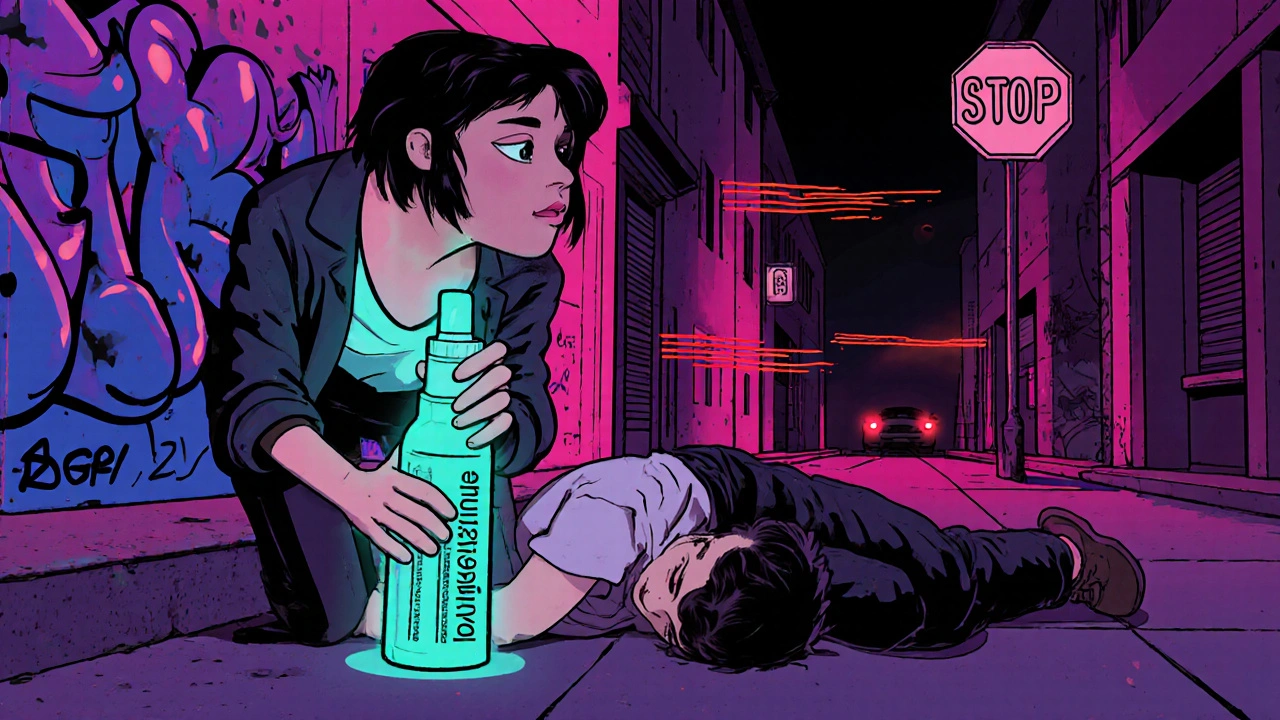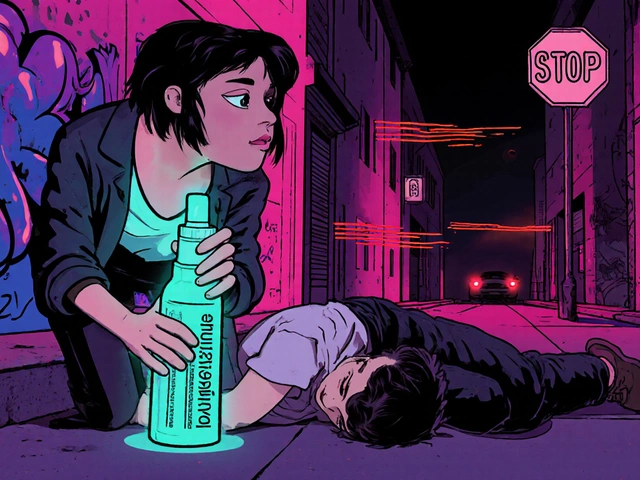Key Takeaways
- Naloxone instantly reverses opioid overdoses and saves lives.
- Multiple delivery formats make it easy for laypeople and professionals.
- Broad distribution-pharmacies, schools, EMS-cuts mortality rates.
- Policies that fund community programs amplify impact.
- Combining naloxone with treatment pathways improves long‑term recovery.
Opioid addiction remains one of the deadliest public‑health crises in the United States. While prevention and treatment are essential, the fastest way to stop a fatal overdose is a simple, life‑saving injection. That’s where Naloxone is a medication that rapidly reverses opioid poisoning by displacing the drug from brain receptors, restoring normal breathing within minutes.
In this guide we’ll unpack why naloxone matters, how it works, who should carry it, and what policies make the biggest difference. By the end you’ll know exactly how to act when an overdose happens and how to support broader community efforts.
How Naloxone Works: The Science in Plain English
When opioids bind to mu‑type receptors in the brain they blunt pain signals, produce euphoria, and-at high doses-slow respiration. Naloxone is an opioid antagonist; it has a higher affinity for those same receptors but does not activate them. In practical terms, it pushes the opioid molecules off the receptors and restores normal breathing.
Because it does not stay in the body as long as many opioids, its effects can wear off after 30‑90 minutes. That’s why a single dose may buy time for emergency services, but ongoing medical care is still needed.
Delivery Formats: Choosing the Right Tool for the Situation
Over the past decade manufacturers have rolled out three main delivery methods, each designed for a different user group. The table below compares them on key factors.
| Method | Onset Time | Ease of Use | Typical Cost (USD) | Common Settings |
|---|---|---|---|---|
| Intranasal spray | 1‑2 minutes | Very easy - no needles | $30‑$45 per dose | Pharmacies, community kits |
| Intramuscular injection | 2‑5 minutes | Requires basic training | $15‑$25 per dose | EMS, hospitals |
| Auto‑injector (e.g., Evzio) | 1‑2 minutes | Push‑button - voice instructions | $400‑$500 per device | Families, first‑responders |
Who Should Carry Naloxone? A Practical Checklist
- People who use opioids, even occasionally.
- Friends or family members of someone who uses opioids.
- Staff at shelters, harm‑reduction sites, and community centers.
- First responders-EMTs, police, and fire‑department personnel.
- Healthcare providers who prescribe high‑dose opioids.
All of these groups can be trained in a quick 5‑minute demonstration that covers how to recognize an overdose, administer naloxone, and call emergency services.

Policy Landscape: How Governments and Agencies Amplify Impact
In the United States the FDA has approved naloxone for over‑the‑counter sale in many states, and several states have passed standing orders that let pharmacists dispense it without a doctor’s prescription. These standing orders have been a game‑changer, increasing access from 2% of high‑risk households in 2014 to over 30% in 2023.
Funding streams also matter. Federal grants under the Opioid Reduction Act empower local health departments to buy bulk kits and run community training sessions. Cities that allocate at least $1million annually to Community Naloxone Programs have seen a 25% drop in opioid‑related deaths within two years.
Law‑enforcement agencies that adopt a Harm Reduction mindset-viewing overdose as a medical emergency rather than a criminal issue-report higher recovery rates because they connect overdose survivors to treatment.
Linking Naloxone to Long‑Term Recovery
Saving a life is just the first step. Effective programs pair naloxone distribution with referrals to Medication‑Assisted Treatment (MAT), which combines medications like buprenorphine or methadone with counseling. Studies from the CDC in 2022 showed that patients who received naloxone and were linked to MAT within 24hours had a 40% lower chance of a repeat overdose.
Community health workers play a crucial role: they hand out kits, educate families, and schedule follow‑up appointments. When those workers are embedded in local clinics, the “overdose‑to‑treatment” pipeline shortens dramatically.
Common Myths About Naloxone-Debunked
- Myth: Naloxone will encourage drug use.
Fact: Research consistently finds no increase in opioid use after naloxone access. The drug simply prevents death. - Myth: Only doctors can give naloxone.
Fact: Standing orders and OTC status allow anyone to purchase and administer it. - Myth: Naloxone works on all opioids.
Fact: It reverses the effects of most opioid agonists, but synthetic fentanyl analogs may require higher or repeated doses.

How to Respond to an Overdose: Step‑by‑Step Action Plan
- Check responsiveness: tap the person, shout their name.
- Call 911 immediately. Provide location and describe the situation.
- Lay the person on their side (recovery position) to keep the airway clear.
- Administer naloxone using the device you have. Follow the device’s instructions exactly.
- If no response after 2‑3minutes, give a second dose if available.
- Stay with the person until emergency services arrive.
Practicing these steps in a low‑stress setting-like a community workshop-dramatically improves confidence during a real emergency.
Future Directions: What’s Next for Naloxone and Opioid Harm Reduction?
Researchers are testing longer‑acting formulations that stay active for up to 4hours, which could reduce the need for multiple doses during a fentanyl‑heavy overdose. Simultaneously, smartphone apps are being piloted to alert nearby volunteers when a 911 call is placed, creating a rapid response network.
Policy makers are also debating the inclusion of naloxone in school health‑kits. Early data from pilot programs in Illinois show that students trained to recognize overdose can act as effective first responders for peers.
Conclusion: Turning Knowledge Into Action
Naloxone’s power lies in its simplicity: a few minutes, a small dose, and a life saved. When that simplicity is paired with community distribution, supportive policy, and clear pathways to treatment, it becomes a cornerstone of a comprehensive opioid‑crisis response.
If you or someone you know is at risk, get a naloxone kit today, learn the steps above, and share the knowledge. Every dose administered is a step toward turning the tide on opioid addiction.
Frequently Asked Questions
Can I use naloxone on a child?
Yes. The dosing is weight‑based, and most kits include instructions for pediatric use. Always call 911 first.
How long does a naloxone kit last?
Unopened nasal spray or injection kits typically have a shelf life of 2‑3years. Check the expiration date before storing.
Is a prescription required to buy naloxone?
In most states, no. Standing orders let pharmacists dispense naloxone over the counter. Some states still require a prescription, so verify local rules.
What should I do after giving naloxone?
Keep the person on their side, monitor breathing, and stay until EMS arrives. Encourage them to seek medical evaluation even if they feel fine.
Can naloxone cause withdrawal symptoms?
Yes, especially for people physically dependent on opioids. The sudden reversal can trigger discomfort, but the benefit of restoring breathing outweighs the temporary withdrawal.


Ah, the sheer tragedy of opioid deaths! It's heart‑wrenching, it's maddening, it's... an endless nightmare!!!
Everyone seems to think naloxone is just another pill, but the reality is far more intricate. The pharmacodynamics alone demand a solid grasp of receptor affinity, something most laypeople overlook. Moreover, the policy landscape is riddled with half‑measures that only serve to perpetuate stigma. If you skim the CDC's latest report, you'll see that a robust standing order program can slash mortality by a quarter within two years-hard numbers, not anecdotes. So before you dismiss the importance of community distribution, recognize that it's a cornerstone of any genuine harm‑reduction strategy.
Enough with the academic fluff; people are dying now, not in some textbook. You can quote CDC all you want, but the streets need kits today, not tomorrow's conference slides. The delay caused by bureaucratic debates costs lives-real, breathing humans. We must cut red tape, hand out nasal sprays, and train anyone willing. If we keep polishing our arguments while someone chokes, we’re complicit.
Philosophically, naloxone embodies the principle of immediate rescue over speculative prevention; the former saves lives now, the latter promises futures that may never arrive.
Look, the rollout of naloxone isn’t just a benevolent public‑health initiative; it’s a calculated move orchestrated by shadowy pharma conglomerates seeking to control the opioid narrative 🕵️♀️. They embed micro‑dosage trackers in nasal sprays, supposedly to monitor usage, but really to feed data back to their algorithmic surveillance networks. The government’s “standing orders” are a trojan horse, granting corporations unprecedented market penetration while the populace remains complacent. Every kit you buy is laced with a proprietary stabilizer that, according to leaked documents, can be repurposed for a new class of synthetic opioids-if you read the right forums. Meanwhile, community health workers are unwitting couriers, distributing devices that double as data collection nodes. The CDC’s 2022 study you cite? It conveniently omits the footnote where the funding source is a major opioid manufacturer. 🙄 The “long‑acting formulations” being trialed next year are rumored to include a viral vector that could alter neural pathways, a subtle form of population control under the guise of safety. Even the smartphone alert apps are prototypes for a larger “overdose‑to‑law‑enforcement” pipeline, linking civilian reports directly to policing algorithms. And let’s not forget the school health‑kit proposals; they’re a pretext to normalize drug‑related interventions in minors, conditioning them to accept medical surveillance from an early age. The emotional weight of an overdose is weaponized to create dependency on these kits, ensuring a perpetual market. In short, while the surface benefits are real-lives saved, breaths restored-the underlying agenda is a sophisticated blend of profit, data harvesting, and behavioral engineering. Stay vigilant, question the source of every grant, and don’t let the benevolent façade blind you to the hidden strings. 💡 The opioid crisis may never be solved by a single antidote; it requires systemic change. Until we dismantle the profit‑driven pipelines, any naloxone program remains a Band‑Aid on a deep wound.
We must drown the silence with ACTION!!!
Indeed, decisive measures coupled with community education can substantially reduce opioid mortality rates, provided they are implemented with rigorous oversight and sustained funding.
Absolutely, let’s keep spreading the word and hooking folks up with kits – it’s a team effort.
Darling, your earnestness is commendable, yet the discourse demands a richer lexicon-perhaps “collaborative prophylaxis” rather than the pedestrian “spreading the word”.
When we examine the ethical tapestry of naloxone distribution, we find that the moral imperative to preserve life outweighs any abstract concerns about dependence, a principle that resonates across cultures and epochs.
Well said! Let’s keep the momentum going-every kit handed out is a victory for humanity 😊.
It’s encouraging to see so many perspectives; hopefully the combined effort will turn the tide on this crisis.